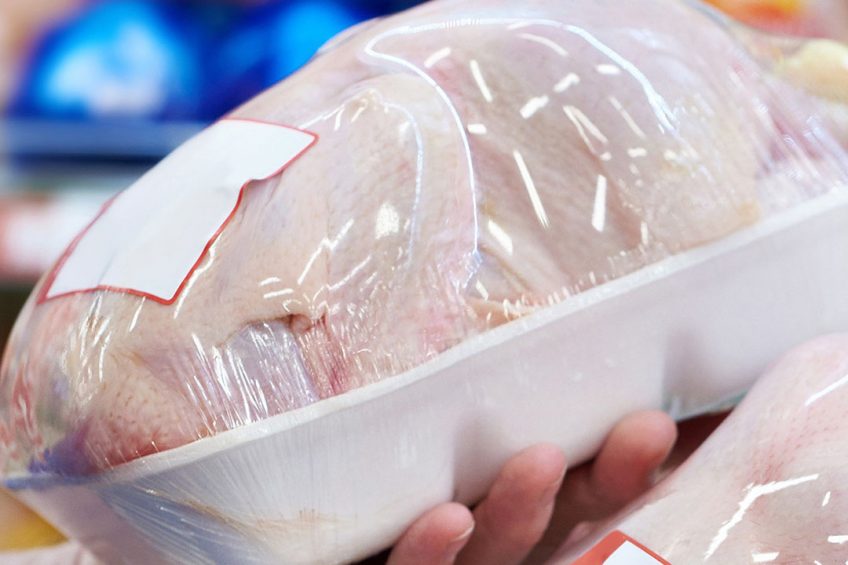Interventions reducing the risk of poultry meat contamination

Poultry farmers have a huge role to play in reducing the levels of food contaminated with campylobacter and salmonella, according to a new brief released by the respected US think-tank Pew Charitable Trusts.
Contaminated meat and poultry products are responsible for an estimated 2 million bacterial illnesses in the US each year. One study, conducted jointly by the Centers for Disease Control and Prevention, Food and Drug Administration and Department of Agriculture indicated that 35% of campylobacter cases are linked to chicken and turkey and 36% of salmonella illnesses are associated with chicken, turkey, beef and pork.
The Pew Trusts say in the brief that a comprehensive approach to poultry and meat safety must start on the holding because harmful bacteria often originate there and then enter the slaughterhouse with food animals.
Quoting its influential 2017 report, “Food Safety from Farm to Fork: Interventions on Farms and Feedlots can improve US Meat and Poultry safety”, the brief says there are currently three types of on-farm intervention that can make a difference:
Interventions
- Procommensal strategies indirectly inhibit the pathogen by favouring competition with non-pathogenic bacteria. Examples are probiotics and prebiotics in animal feed.
- Anti-pathogenic strategies work through direct interaction with the pathogen or by priming the animal’s immune response to fight it. Example include vaccines, antimicrobials, sodium chlorate and essential oils.
- Exposure-reduction strategies decrease the risk that pathogens will be introduced or spread within the herd or flock by animals or people. Examples include biosecurity protocols that decontaminate workers’ clothes and tools; limiting access to vermin, insects and farm personnel to animal housing; feed and water hygiene; isolation of infected animals and adequate housing.
Countries with a good track record
The study highlights the effective work carried out in Sweden, Finland, Norway and Denmark in implementing successful food safety control programmes to reduce Salmonella contamination in poultry and swine, noting the strict on-farm biosecurity measures in force. These include cleaning and disinfecting animal housing, extensive testing and monitoring for Salmonella in the animals and feed, culling of infected breeding animals and separate handling of Salmonella-positive flocks at slaughter.
The results show that no Salmonella was detected in a sample of 4,033 Swedish poultry carcases in 2017; less than 1% of Norwegian and Finnish poultry flocks were contaminated with the pathogen in 2016 and up to 600,000 human infections from the bacterium were avoided in Denmark between 1994 and 2005.
In contrast, among USDA-regulated raw poultry products, Salmonella contaminates about 5% of whole chicken carcases, 15% of chicken parts such as legs, breasts and wings and 40% of ground chicken.
Probiotics
The study says probiotics can be administered to poultry to reduce the prevalence of Salmonella. Defined probiotics may consist of Lactobacillus species, heat-stable Bacillus species that can be given in heat-treated pelleted feed, or other micro-organisms.
A systematic review of commercial products found that defined direct-fed probiotics are effective at reducing Salmonella. As in cattle, the economic benefits of the use of probiotics in poultry may offset the costs, making probiotics a practical pre-harvest intervention in broilers.
Vaccines
Studies have demonstrated the efficacy of vaccinating broiler-breeders to reduce Salmonella prevention and concentration in their progeny. One study found that poultry companies in the US with vaccination programmes for breeders saw a significant reduction in the prevalence of Salmonella on birds entering the slaughterhouse, while another study has found that vaccinating breeders may be more economical than targeting the intervention at their offspring, because an average breeder will lay up to 180 broiler eggs a year..
Poultry vaccination can yield substantial public health benefits. The World Health Organisation found that reducing the prevalence of Salmonella contaminated chicken by half would reduce the risk of illness from eating a serving of chicken by as much as 50%. A significant decline in human Salmonella enteritidis in the UK and Europe has been linked to vaccination of egg-laying hens.
Other approaches
Some pre-harvest practices are used around the globe, but not in the US, such as sodium chlorate, which has been found to reduce Salmonella in chicken and E.coli in cattle and pigs.
Campylobacter has proved more challenging to control, says the report. Sweden has had success by using on-farm hygiene measures, including rodent and bird barriers as well as employee protocols to stop contamination entering on shoes and clothes.
Studies have established some relationship between Campylobacter infection and the bacterium’s presence in ponds, puddles and other water sources on farms, but more research is needed in this area.
- The report Food Safety From Farm to Fork can be found on the research and analysis pages of the Pew Trusts website.












